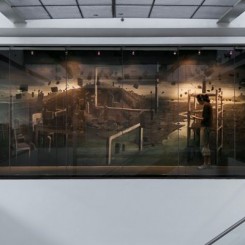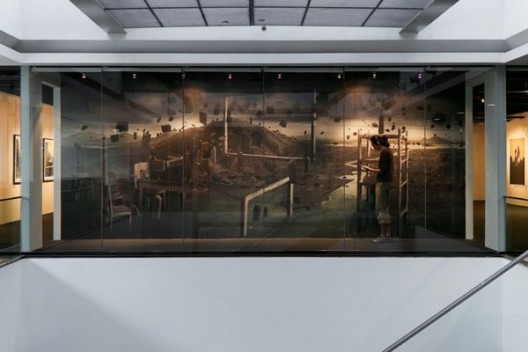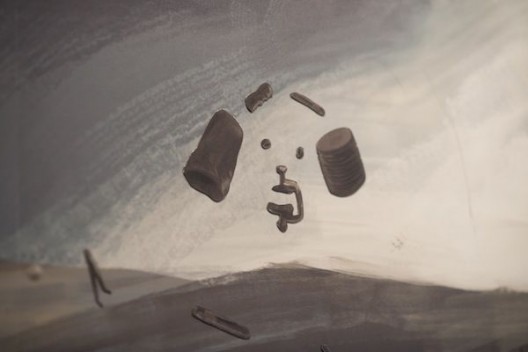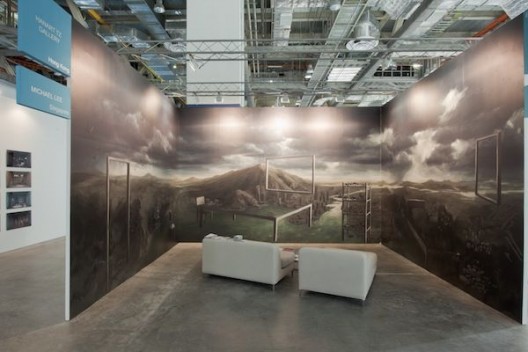Catherine Freeman: I come from a design background, and I like how in your pieces you have so much architectural and design imagery. I wonder how this came to be one of your inspirations?
Michael Lee: I find design languages, whether in the context of graphic design, architectural design, or urban planning, very captivating because there is a certain position and exactness to it. Having said that, I also observe how the systematic and scientific way of associating with design potentially gets used or manipulated for purposes that might be at the expense of the individual. Also, the rigidity of design language can potentially pose a problem of development, whether in the context of a project or a person’s growth.
CF: Could you tell me a little bit about the significance of “Revision as Exercise,” especially in the context of what you were just saying about design and bringing in different motifs?
ML: A lot of what I do resolves around the value ascribed to different things – to space, to a person’s status, to the success of failure of a city, for example. Sometimes we think of the spanking new skyscrapers as something to be proud of and conversely a building that looks old or perhaps even haunted or abandoned is associated with failure of some sort. So my interest is in spaces and structures that exist at the margins of human consciousness, because I think somewhere along the same lines as the writer Robert Harbison, who wrote this book The Built, the Unbuilt, and Unbuildable. He said that we can get a sense of a person’s pride in the way that a city is planned and presented. And so, in fact, in the last few years I have been fascinated with failure — the notion of failure both in terms of personal status and betterment as well as in terms of architectural and urban practices.
I started the project “Revision as Exercise” with this idea of the creation of something perfect, but totally chaotic. At first, I was fiddling around trying to create sculptures with a dual view so that from one side, you might see sculptures of human bodies, but from the other side, you would see that they are partially damaged. Eventually, I decided to develop something quite new in the form of a collage that the audience contributes to. I started with key words in terms of the medium — I just wrote down, “Okay, I want something interactive; I want it in the form of collage; and I want it in the form of an installation rather than a portable, hangable painting or sculpture.”
From then on, I decided it would be really cool to have a work which begins in a perfect manner, and is beautifully and drastically transformed or even ruined by the audience along the way. In the process, I was reminded of these children’s books that open up with an empty landscape — which provides a sheet of figures of humans and objects for the user or player to try put into the landscape. So I started with imagery related to a sense of transformation of space. At the same time I have always been in awe of René Magritte. I start with the acknowledgement that it is impossible to do a proper homage, that is, to go beyond him, and I wanted to attempt the impossible anyway.




